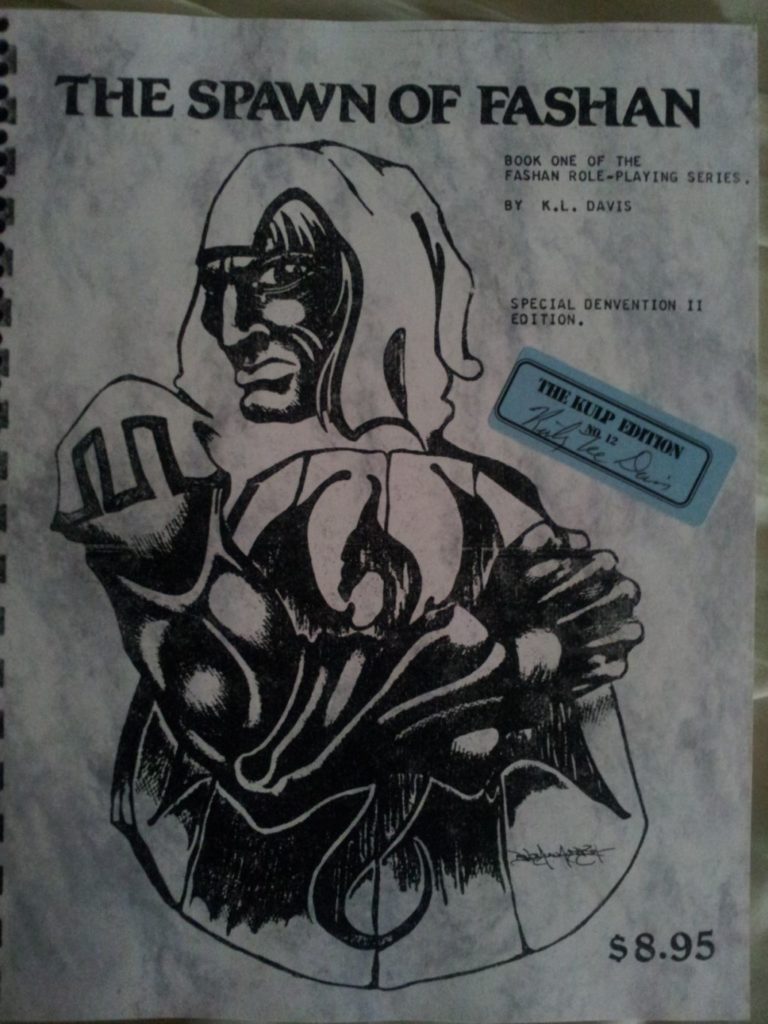I started to feel that I didn’t know roleplaying games well enough so I came up with the plan to read a roleplaying game corebook for every year they have been published. Selection criteria is whatever I find interesting.

The Spawn of Fashan is famous for one thing: Being really bad. It’s a roleplaying game equivalent to The Room. There are a few games famous for being terrible, such as FATAL and Racial Holy War, and compared to those Fashan distinguishes itself in the sense that its crimes are largely aesthetic.
I wanted to read the game because of its cult status but I was also worried about a trap we tend to fall into whenever we’ve collectively deemed something to be bad. We look for the things that reinforce that narrative and become blind to whatever other ideas the work might have.
So the question is, what’s interesting about The Spawn of Fashan?
Fashan is a fantasy world created by the game’s designer Kirby Lee Davis. At the beginning of the book, he explains the title of the roleplaying game by noting that during play, each group would end up creating their own variation of Fashan, even if they wanted to play scrupulously close to the original.
Because of this, nobody could play on the original Fashan, as all play-Fashans were inevitably partly created by the players themselves in their own imaginations.
So the game worlds they had would not be Fashan, but the spawn of Fashan.
So things get pretty philosophical straight off the bat! After this, I was surprised to find that the book offers only very limited details about the world of Fashan. It’s a fantasy world where Warriors hold sway. Occultists are the hidden masters, opposing Swayers, who sway human minds. At the end, there’s a map of a region called Boosboodle. Apart from a few monsters, this is pretty much it.
The creative goals of the game are explicitly stated. They are to bring individuality to character creation and to make the game more realistic. Individuality is increased by adding tables where you can roll for random characteristics such as bizarre phobias or extra senses.
The main game mechanical innovation for adding realism is a fatigue system that allows for the conservation of effort: The character can decide to hit weaker or harder depending on how many points they want to spend.
I started reading this book on a lark, but in truth it was extremely tedious. It’s a hard slog of confused rules text with interesting details few and far between. For entertainment value, the best part was in the end at the example of play. It’s an amazing little nugget of game writing in that it doesn’t really try to sell the game at all.
There’s a Referee and a player. The Referee is tired and sullen while the player just wants to murder things for no reason. The main action consists of the player character trying to buy various things at the store, all of them unavailable. It reads like an intentional parody of bad roleplaying.